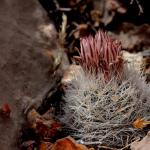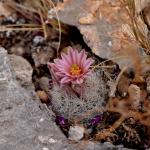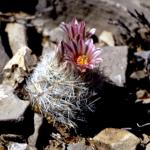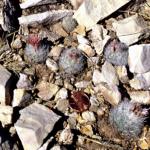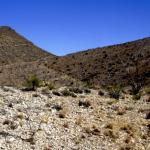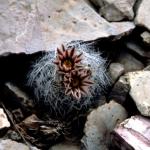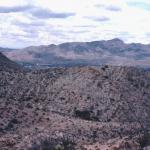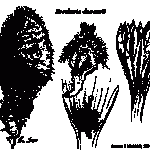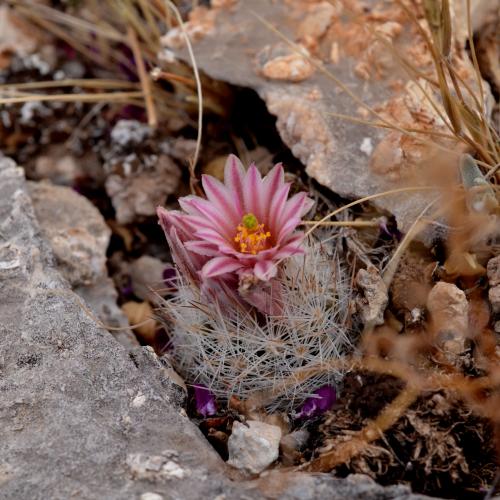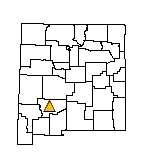Escobaria duncanii (Duncan's Corycactus)
ESCOBESSEYA DUNCANII HESTER; CORYPHANTHA DUNCANII (HESTER) L. BENSON
| USFWS | State of NM | USFS | BLM | Navajo Nation | State Rank | Global Rank | R-E-D Code | NMRPTC Status | Strategy Status |
|---|---|---|---|---|---|---|---|---|---|
| E | SEN | S1 | G3T2T3 | 2-2-2 | R | SS |
| Overall Conservation Status | Documented Threats | Actions Needed |
|---|---|---|
| UNDER CONSERVED | Collection, Recreation (OHVs) |
Establishment of ACEC at Mud Mountain and withdraw from mining laws. Population trend monitoring. Additional searches of habitat in Caballo Mtns. and foothills. Genetic comparison to TX/MX populations. fire management |
Stems usually solitary, mostly 1-2 cm across by 1-2 cm tall, hemispherical but appearing conical due to spination; tubercles solitary with groove on upper side; spines 30-75 per areole, slender and bristle-like, spreading, to 10(22) mm long; flowers about 1 cm wide, not opening widely, pale whitish, brownish, or pinkish with midribs darkest, stigmata green; perianth deciduous in flower; mature fruits elongate, about 1-2 cm long, bright red or pinkish-red; seeds about 1.5 mm long, nearly globose with rim around basal hilum, black, pitted. Flowers in April.
The green stigmas, deciduous perianth in fruit, and black seeds readily distinguish Escobaria duncanii and E. missouriensis from all other New Mexico species. Escobaria duncanii differs from E. missouriensis by the formers southern distribution, more slender non-pubescent spines, and smaller seeds.
New Mexico, central Sierra County; Texas, Brewster and Presidio counties; adjacent Mexico, Coahuila and Chihuahua.
Cracks in limestone and limy shale in broken terrain in Chihuahuan desert scrub; 1,550 m (5,100 ft) in New Mexico.
As far as is known the New Mexico population is small and geographically isolated from southern representatives of the species.
As with many cacti, intense land use may cause a decline in frequency and abundance. In addition this species is occasionally taken by collectors. Additional field searches are needed to determine the abundance of this species.
*New Mexico Native Plants Protection Advisory Committee. 1984. A handbook of rare and endemic plants of New Mexico. University of New Mexico Press, Albuquerque.
*Benson, L. 1982. The cacti of the United States and Canada. Stanford University Press, Stanford, California.
Weniger, D. 1970. Cacti of the Southwest. University of Texas Press, Austin. [The photos referenced as Escobaria duncanii are E. dasyacantha a related species not found in New Mexico.]
For distribution maps and more information, visit Natural Heritage New Mexico

